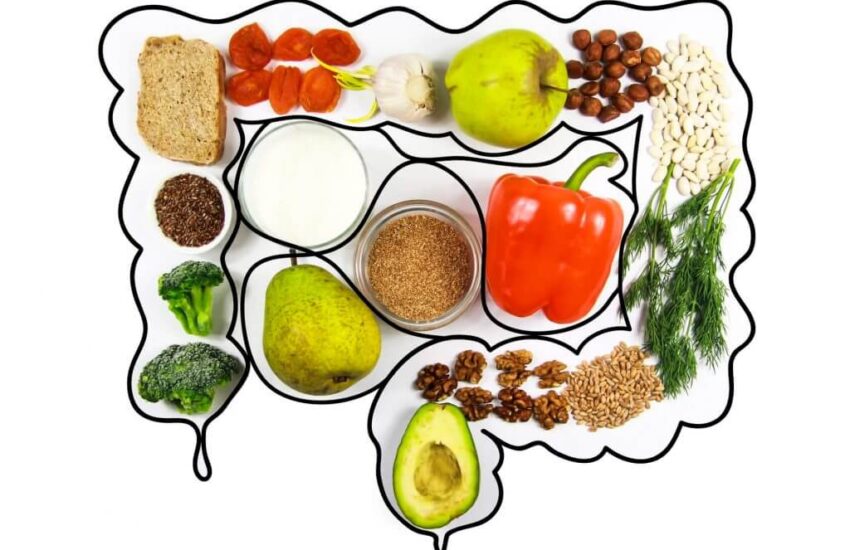A healthy digestive system is important for overall health, according to the National Digestive Diseases Information Clearinghouse. Several factors can affect your digestive health, that includes your lifestyle, lifestyle, and even medications. Research shows that regular workout improves the functioning of your gastrointestinal tract. Which enhances the absorption of nutrients and overcomes the chances of developing gastrointestinal disorders.
If you are doing any workout after some time you will see your stress level reduces. Exercise also helps in reducing the symptoms of bloating or constipation as well.
So if you want to incorporate some exercise into your routine, then make sure to wear highly comfortable and sweat-wicking gym outfits in order to make your exercise session more convenient and easygoing.
So, in today’s blog, I will be discussing the 6 best exercises that will aid in optimal digestive health.
How Does Yoga Aid In Optimal Digestion?
Yoga is the best way to exercise and relax at the same time. You should practice it for many years to improve digestion. Yoga can help improve digestion by improving blood flow throughout the body. Which helps in the absorption of nutrients in your digestive tract.
When you get yourself indulged in yoga, you will notice that you are less bloated after meals. Because your digestive system works more effectively.
You’ll also notice an improvement in the movement bowel. Because yoga helps stimulate peristalsis, or the movement of food through the digestive tract. Which can help in the excretion of waste faster from your body.
How Does Biking Aid In Digesting?
The bike is a healthy way to aid food digestion. The bike has been used for decades to help you treat digestive disorders. It has been proven to be an effective way to treat individuals suffering from diarrhea, constipation, and other gastrointestinal problems.
The following are some of the methods that biking can assist you to maintain optimal digestion:
- It promotes the production of bile, which helps to break down food particles into tiny particles for better absorption.
- Biking promotes enzyme production, which aids in the digestion of proteins, carbohydrates, and fats in food. So they can be broken down further in the small intestine before they get absorbed.
How Do Crunches Aid In Digesting?
Crunches promote the digestion of food by working on the abdominal muscles. The stomach is one of the largest organs in our body. The process of digestion starts in the mouth, where we chew food into tiny pieces when we eat. This process begins with enzymes (that are present in our saliva) breaking down carbohydrates into simple sugars.
Crunches aid optimal digestion by helping to strengthen the muscles of your abdomen. Which are responsible for moving food from your stomach to the small intestine. For most people, optimal digestion takes place when these muscles are strong and flexible. A weak core can lead to poor digestion and even backaches.
How do Crunches Benefit Digestion?
When you exercise on a regular basis and eat healthy food. Your body will produce more gastric juices in your digestive system. This process allows food to break down properly. So it can be absorbed across the lining of your intestines and into your bloodstream as well. So instead of being absorbed through the walls of your intestines as they should be. These particles just settle there until they are ready to come out as waste matter.
So, if you want to develop abdominal strength and want to improve your peristaltic movement then you must perform crunches twice a week.
How Does Walking Aid In Digesting?
Walking is beneficial for digestion, as it is a low-impact exercise. It is also an excellent way to burn calories and reduce weight.
A brisk walk of 30 minutes can burn around 300-400 calories while a slow pace walk may burn 200-300 calories per hour. A person weighing around 150 pounds will burn about 1/2 pound of fat each week by walking at 3 miles per hour for one hour five days a week.
Similarly walking after a meal helps to move food through your digestive tract more rapidly. If you are suffering from indigestion or acid reflux, walking may be a good option for you. Walking helps your body to move food through your digestive system while allowing bile to flow more easily through your liver and gallbladder. This can overcome the heartburn symptoms and discomfort after eating.
So, if you want to improve your digestive issues you must incorporate some workouts into your daily routine. But before starting any exercise you must invest in lightweight and good-quality athletic wear.
How Do Sit-Ups Aid In Digesting?
Sit-ups are often a good exercise for strengthening the abs and lower back, and it also help with digestion. The movement involved in sit-ups assists the transverse abdominal muscles, which run horizontally across your abdomen.
These muscles help in moving food through your digestive system by pushing it from side to side.
Sit-ups also assist you to lose weight by burning fat and strengthening your core. Strong core muscles allow you to perform other exercises more easily.
How to perform sit ups?
When you do sit-ups, you’re triggering your abdominal muscles. These muscles are “transverse abdominis” or TVA. The TVA wraps around your entire abdominal from top to bottom, like a belt holding everything together firmly.
If your TVA muscles then your organs could end up sliding down into the lower portion of your abdomen. When you bend over which ultimately causes bloating and discomfort after meals. By performing regular sit-ups, you can develop the strength in these muscles.
